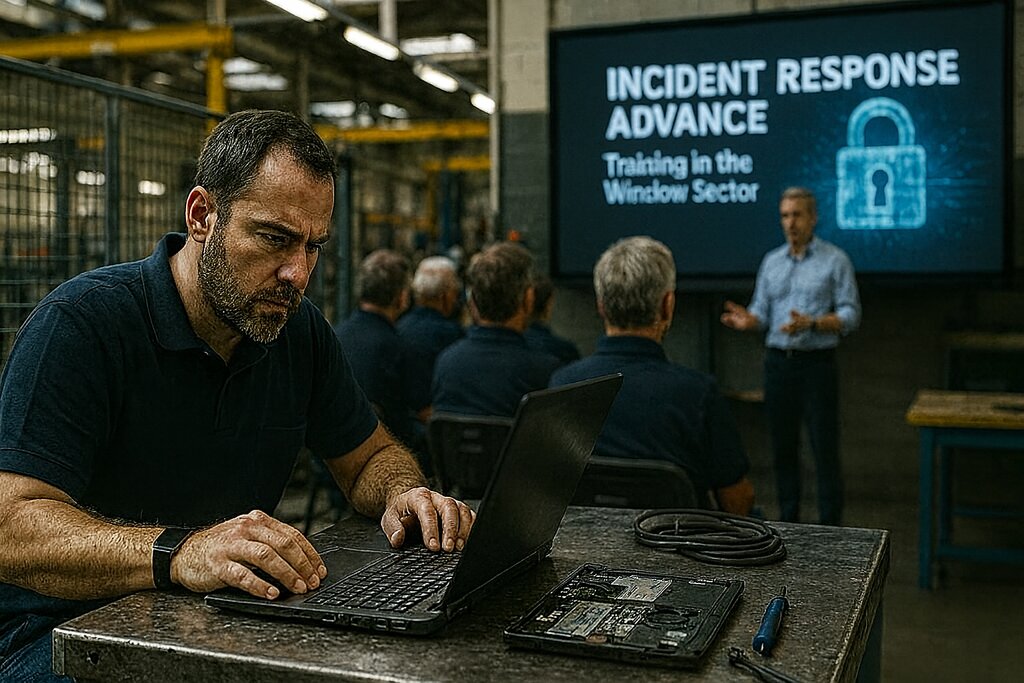Client: Window and Door Manufacturing company
Industry: Window and Door Sector
Number of employees: 80
Objective:
To integrate cybersecurity into the company’s business strategy by improving endpoint monitoring and preventing ransomware attacks commonly targeting the industrial sector.
Adopted Solution:
The company implemented the Advanced Incident Response Course, a three-day intensive program combining theoretical training, malware forensic analysis, hands-on ransomware attack simulations, and debriefing sessions. The program focused on the detection, analysis, and mitigation of complex malware (e.g., GYMalware, Dexter, CGMiner, Lime RAT, Quasar), and on strengthening both operational and decision-making skills in handling critical cybersecurity incidents. A central case study was the 2014 Sony Pictures attack. The methodology included live training in controlled environments, interactive webinars, and active involvement of the technical staff.
The Challenge
This window and door manufacturing firm, with 80 employees, recognized the need to embed cybersecurity into its strategic planning to counter increasingly sophisticated ransomware threats targeting the industrial sector. The main challenge was to implement an effective endpoint monitoring system and develop internal rapid incident response capabilities, aiming to reduce the attack surface and prevent breaches that could disrupt production or compromise sensitive data.
Key Issue Identified
The critical issue was the vulnerability of company endpoints to advanced malware and ransomware leveraging evasion and persistence techniques to bypass traditional defenses. A lack of specific skills in incident response and digital forensics limited the company’s ability to detect and contain threats in a timely manner, increasing the risk of operational downtime and data loss.
Training Intervention
The Advanced Incident Response Course delivered a structured, intensive training program over three days:
- Malware Forensic Analysis:
Participants analyzed real malware samples such as GYMalware, Dexter, CGMiner, and Lime RAT in cloud-based sandbox environments, learning how to detect, isolate, and mitigate threats before any damage occurred. - Advanced Ransomware Attack Simulations:
Using the Sony Pictures 2014 attack as a real-world case study, the course explored both operational and managerial roles during cyber crises. Participants faced simulated attacks like DB Ransomware [Shellshock] and Desktop Hide [Invisible XSS], strengthening incident response and coordination skills. - Debriefings and Feedback:
Each day concluded with debriefing sessions to review what worked, identify gaps, and consolidate learning, preparing staff for real-world cyber threats.
The training primarily targeted IT staff and security managers, with a hands-on, interactive approach to maximize skill retention and operational readiness.
Quantitative and Qualitative Results
Following the training, the company saw a 60% reduction in known ransomware attacks, which were intercepted before causing harm. Internal simulations and security audits showed a 40% improvement in incident response capabilities. Additionally, communication and coordination between technical teams and management significantly improved, enhancing decision-making during cyber emergencies.
Conclusion
Integrating the Advanced Incident Response Course into the company’s cybersecurity strategy enabled this window and door manufacturer to raise its defense level, acquire advanced operational skills, and improve resilience against sophisticated ransomware threats. The hands-on approach, coupled with real-world scenarios like the Sony Pictures case, equipped staff with practical tools to prevent, detect, and effectively mitigate cyber incidents, ensuring business continuity and protecting critical assets.

